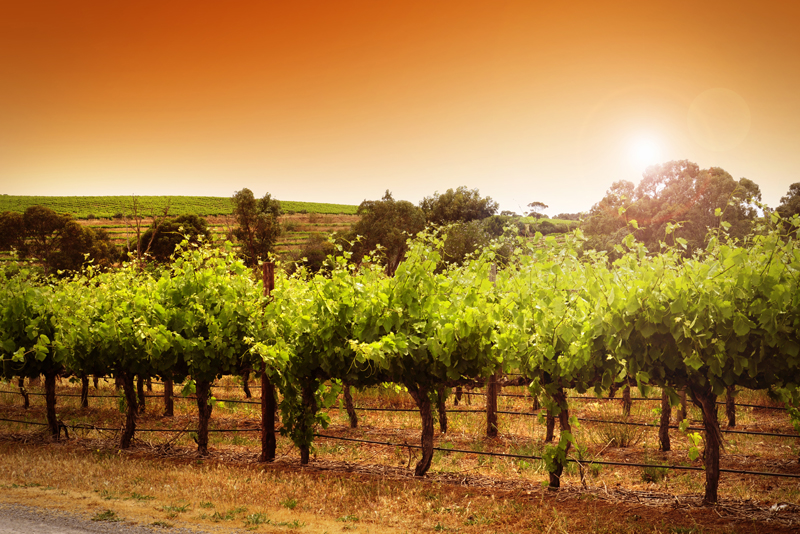Hugo Reid

Los Angeles County was founded by many people who are only known today through street and school names. While most of their stories don’t make earth-shaking news, it’s nonetheless interesting to learn more about how they helped to create the areas we now know today. The city of Arcadia, for example, was originally part of the California Mission System and under the rule of the Catholic church. A man by the name of Hugo Reid was the original European “founder” of the city.
Like his countryman John James Audubon, Hugo Reid was born in Scotland. Unlike Audubon, however, Reid was a businessman who first moved to Mexico in order to take advantage of the possibilities of trade between the old and new worlds. He lived in the city of Hermosillo and visited Los Angeles in 1832, at the age of eighteen. Here, he met a married woman from the Tongva tribe of Native Americans who lived at the San Gabriel Mission. Reid was enraptured with the beauty of the area, and vowed to return.
The mission was founded in 1771 while the area was under Spanish rule. With the passing of California land from Spain to Mexico, the new government feared continuing European influence through the Catholic Church. In 1833, the Mexican Secularization Act was passed, which took large tracts of land away from the missions and gave it to independent ranchers. Reid thus arrived in the area at the perfect time in order to benefit from the political turmoil.
Settling in the area now known as Arcadia in 1834, Reid changed his name to Don Perfecto Hugo Reid and converted to Catholicism in order to be able to acquire land under the Mexican government. He married his sweetheart (who similarly changed her name and religion) and adopted her children. The Reid-Baldwin adobe, as it is now known, was constructed in 1839 or 1840, in order to fulfill one of the requirements for land ownership. Don Perfecto and Dona Victoria were given provisional title to the Rancho Santa Anita in 1841 from Judge Juan B. Alvarado, for whom the Los Angeles street is names. The 13,319 land grant covered modern-day Pasadena, Arcadia, Monrovia, Sierra Madre, and San Marino. It was later confirmed by Governor Pio Pico in 1845.
Reid and his wife lived at Rancho Santa Ana in comparative luxury, enjoying the mild weather and their house built on the shore of a marsh converted into a lake. Angered at the treatment of Native Americans, Reid wrote a series of incendiary stories for the Los Angeles Star during the 1940’s. He died in 1852, five years after selling Rancho Santa Anita to a man named Henry Dalton. The land grant eventually passed into the hands of Elias Jackson “Lucky” Baldwin, who renovated the adobe in 1977.
Today, the Reid-Baldwin adobe is California Historical Landmark #368. It can be found at the Los Angeles Arboretum, which was created out of part of the Rancho Santa Anita Land Grant. Reid was immortalized by having an Arcadia grade school named after him, but has otherwise passed into obscurity.
Like his countryman John James Audubon, Hugo Reid was born in Scotland. Unlike Audubon, however, Reid was a businessman who first moved to Mexico in order to take advantage of the possibilities of trade between the old and new worlds. He lived in the city of Hermosillo and visited Los Angeles in 1832, at the age of eighteen. Here, he met a married woman from the Tongva tribe of Native Americans who lived at the San Gabriel Mission. Reid was enraptured with the beauty of the area, and vowed to return.
The mission was founded in 1771 while the area was under Spanish rule. With the passing of California land from Spain to Mexico, the new government feared continuing European influence through the Catholic Church. In 1833, the Mexican Secularization Act was passed, which took large tracts of land away from the missions and gave it to independent ranchers. Reid thus arrived in the area at the perfect time in order to benefit from the political turmoil.
Settling in the area now known as Arcadia in 1834, Reid changed his name to Don Perfecto Hugo Reid and converted to Catholicism in order to be able to acquire land under the Mexican government. He married his sweetheart (who similarly changed her name and religion) and adopted her children. The Reid-Baldwin adobe, as it is now known, was constructed in 1839 or 1840, in order to fulfill one of the requirements for land ownership. Don Perfecto and Dona Victoria were given provisional title to the Rancho Santa Anita in 1841 from Judge Juan B. Alvarado, for whom the Los Angeles street is names. The 13,319 land grant covered modern-day Pasadena, Arcadia, Monrovia, Sierra Madre, and San Marino. It was later confirmed by Governor Pio Pico in 1845.
Reid and his wife lived at Rancho Santa Ana in comparative luxury, enjoying the mild weather and their house built on the shore of a marsh converted into a lake. Angered at the treatment of Native Americans, Reid wrote a series of incendiary stories for the Los Angeles Star during the 1940’s. He died in 1852, five years after selling Rancho Santa Anita to a man named Henry Dalton. The land grant eventually passed into the hands of Elias Jackson “Lucky” Baldwin, who renovated the adobe in 1977.
Today, the Reid-Baldwin adobe is California Historical Landmark #368. It can be found at the Los Angeles Arboretum, which was created out of part of the Rancho Santa Anita Land Grant. Reid was immortalized by having an Arcadia grade school named after him, but has otherwise passed into obscurity.

Related Articles
Editor's Picks Articles
Top Ten Articles
Previous Features
Site Map
Content copyright © 2023 by Korie Beth Brown, Ph.D. . All rights reserved.
This content was written by Korie Beth Brown, Ph.D. . If you wish to use this content in any manner, you need written permission. Contact Korie Beth Brown, Ph.D. for details.







